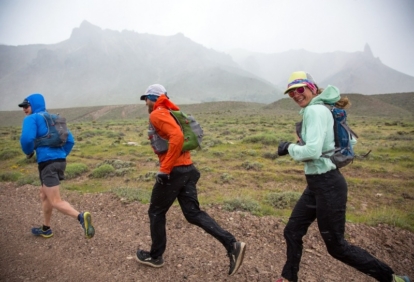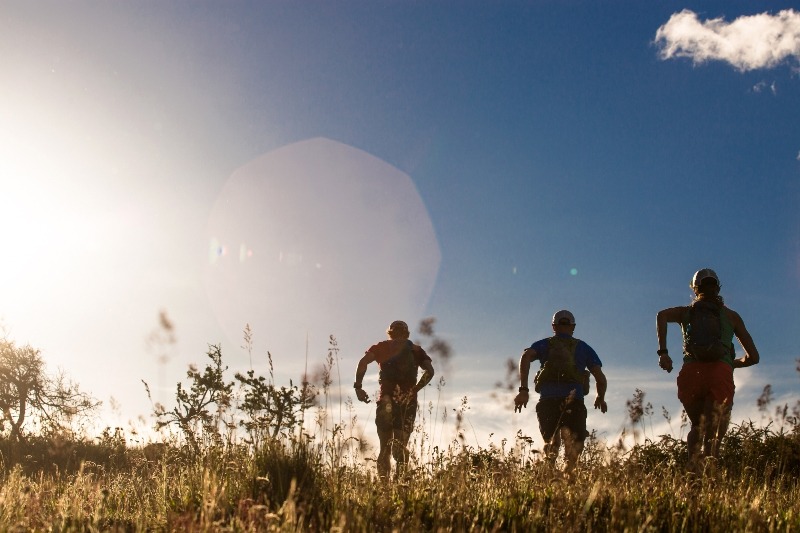Patagonia Ambassadors Run the New Patagonia Park, Part 2: The Run
How do you tell the story of 106 miles in two days in a short and concise manner? It’s nearly impossible—similar to trying to restore an ecosystem and build a national park. So many little steps, so many little stories.
Our route would take us through the new Patagonia Park. Starting north in the town of Chile Chico on the edge of the nearly 400,000-acre Jeinimeni Reserve, dropping into Valle Chacabuco on day one. Day two would take us through Valle Chacabuco to the Park’s headquarters, up and over Cerro Tamanguito and into the southern beech forests of Tamango National Reserve to end in the small village of Cochrane on the western edge of Lago Cochrane.
We left the quiet, sleeping village of Chile Chico on the southern shores of Lago General Carrera at dawn on December 9 with a few of the local feral dogs loping along with us. The first 34 miles took us along the border of Argentina, nearly all uphill, into a driving headwind for seven hours on a washboard gravel road. We encountered rain, sleet and snow, wild horses and sheep. We took turns leading and fighting the infernal wind, Krissy and I both going through our own quiet ups and downs. Luke seemed to be the only one unfazed by the weather. They must cut them from a different mold in Idaho.
Our one and only rendezvous with our crew was on the shores of Lago Jeinimeni—seven hours into the first day. We gorged ourselves on whatever food was put in front of us, filled our packs with more food, checked and adjusted the gear, shouldered our loads and headed out. The next section took us into the heart of the Jeinimeni Reserve, which will one day form the northern part of the future Patagonia National Park. The next seven miles was a series of rocky glacier-fed braided stream valleys and a couple of low, wooded beech forest passes we had to quickly ascend and descend to gain the final headwaters of the Chacabuco River.
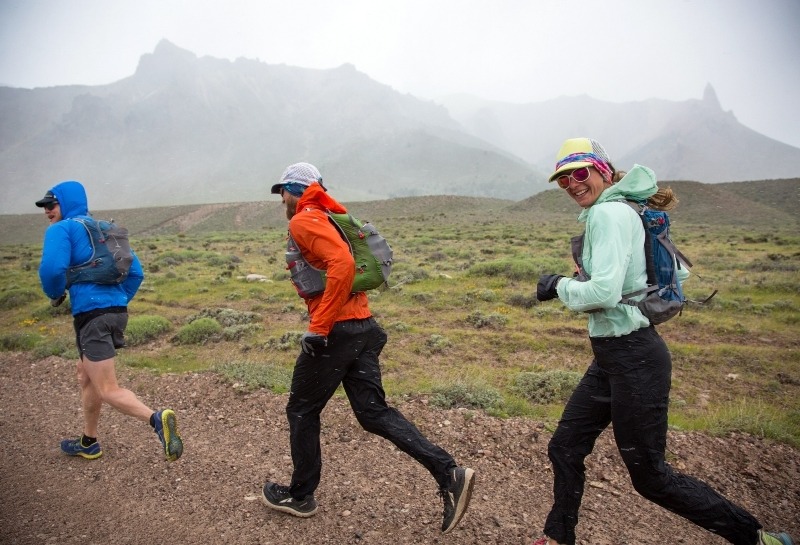 Smiling through some spicy weather. Photo: James Q Martin
Smiling through some spicy weather. Photo: James Q Martin
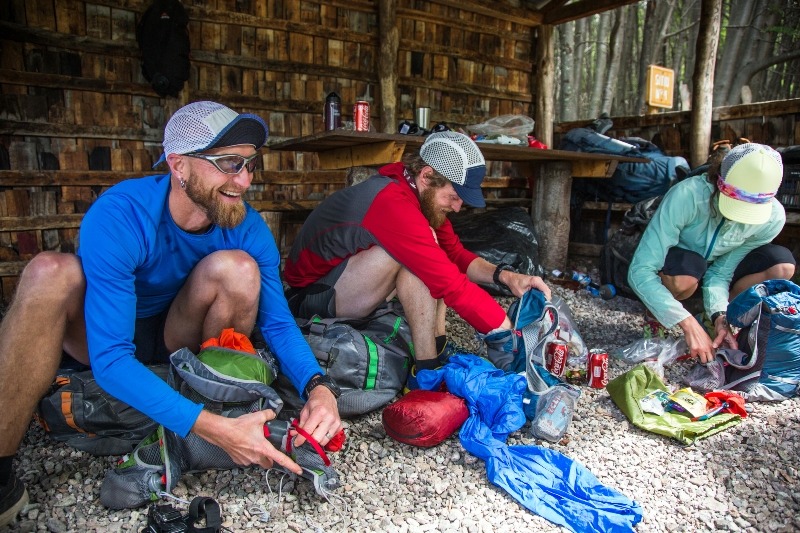 Sugar, the ultrarunner’s 11th essential. Jeff Browning, Luke Nelson and Krissy Moehl load up before heading into the heart of the Jeinemeni Reserve, the self-supported middle passage of their 106-mile run. Photo: James Q Martin
Sugar, the ultrarunner’s 11th essential. Jeff Browning, Luke Nelson and Krissy Moehl load up before heading into the heart of the Jeinemeni Reserve, the self-supported middle passage of their 106-mile run. Photo: James Q Martin
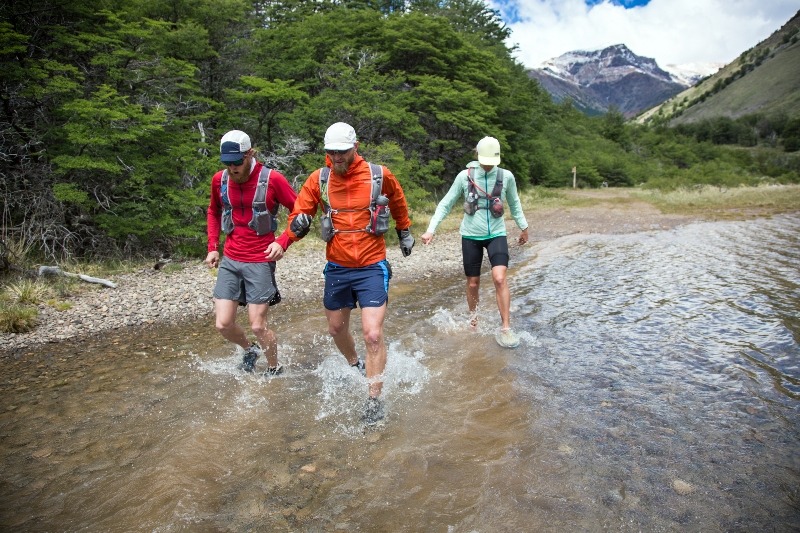 Tiptoeing through the first of many frigid water crossings in Valle Hermoso. Photo: James Q Martin
Tiptoeing through the first of many frigid water crossings in Valle Hermoso. Photo: James Q Martin
We were surrounded by gigantic glacier-covered peaks towering six-to-seven thousand feet above us—the ominous clouds just high enough to allow us to catch glimpses of the snow-covered summits in every direction. We barely averaged two miles per hour through this section. We had to crisscross so many ice-cold streams that we gave up trying to keep dry feet. The water was so cold that running was nearly impossible for 20-30 seconds afterward due to frozen ankles—we were confined to hiking on the rocky stream bed until the blood-flow returned, searching for the next rock cairn marker to lead the way.
This section was so spectacular that we couldn’t help yelling to each other “Look there!” or “Crazy!” or “I can’t believe this place!” Mountain running takes you to a lot of special, wild places, but this one was beyond words. I only hope to take my kids back there some day to see it. When we first crested the rocky pass that overlooked the Valle Hermoso and Lago Verde, we all stopped dead in our tracks to take in the dark red rock running straight into the turquoise lake, lost for words. At this point, Luke made a quick video for his kids telling them he would bring them there one day.
A video posted by Luke Nelson (@slukenelson) on Mar 18, 2015 at 9:02am PDT
Instagram clip from Valle Hermoso. Video: Patagonia via @slukenelson
We made it up the valley and to the final grunt climb through the ancient beech forest to the pass and into the upper reaches of Valle Aviles and the Chacabuco River’s headwaters.
As we descended the upper beech forest groves, we came across a rare female woodpecker perched high in a beech above the narrow trail. We all stopped and just took in the sight as the evening light was fading—speaking in hushed whispers.
We were soon entering the land that will one day connect the two reserves—the former estancia turned public park that Conservacion Patagonica has worked so hard to restore over the past decade. Valle Chacabuco was a wonderful sight to behold after 14 hours on our feet. Day one had been 71 miles and we got to our base camp right at dusk at Casa Piedra—a campground sitting on a wide plain along the banks of the Chacabuco River. I took a cold river bath under a headlamp, ate, and crashed out for the night in my tent.
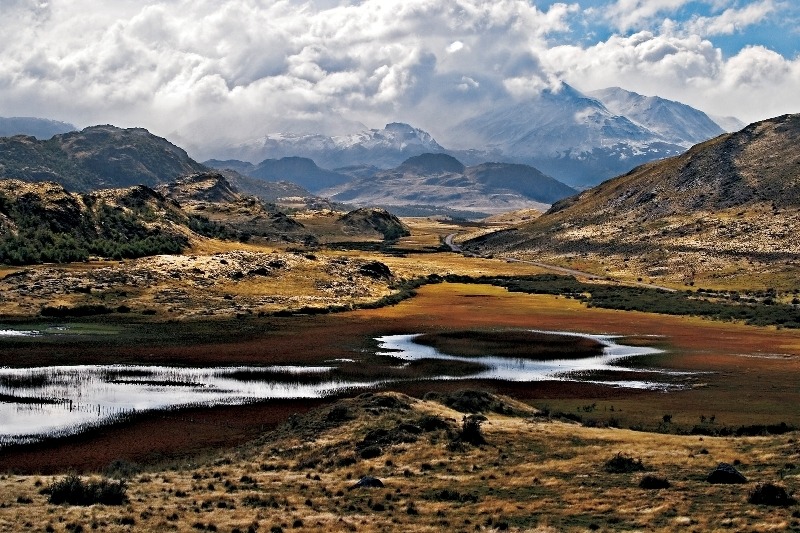 Autumn shows its colors in Valle Chacabuco. Chile. Photo: Linde Waidhofer
Autumn shows its colors in Valle Chacabuco. Chile. Photo: Linde Waidhofer
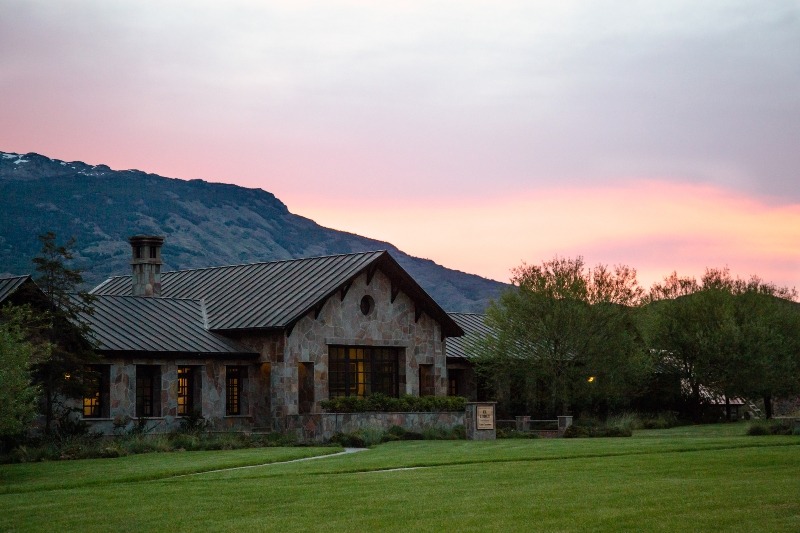 The energy-efficient lodge at Valle Chacabuco, which was designed and decorated in the style of historic Patagonian estancias, offers visitors meals, accommodations and a beautiful venue in which to rest from big days exploring the park. Patagonia Park, Chile. Photo: James Q Martin
The energy-efficient lodge at Valle Chacabuco, which was designed and decorated in the style of historic Patagonian estancias, offers visitors meals, accommodations and a beautiful venue in which to rest from big days exploring the park. Patagonia Park, Chile. Photo: James Q Martin
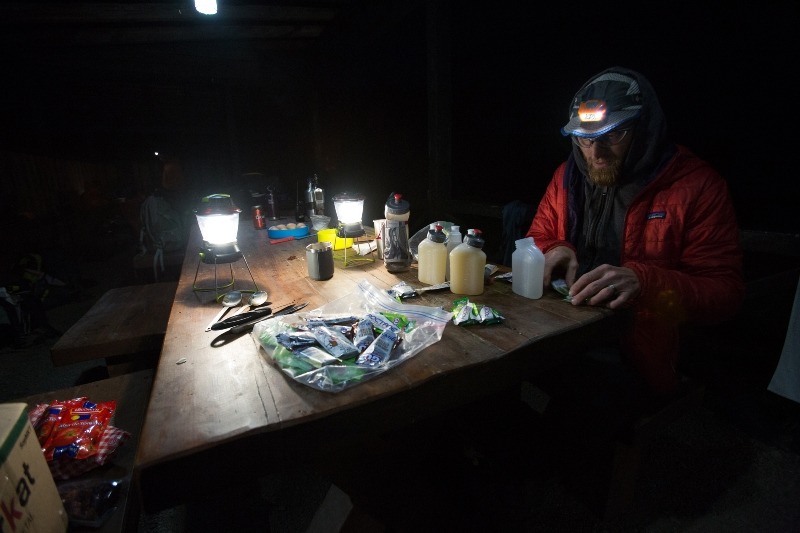 Jeff at camp. Photo: James Q Martin
Jeff at camp. Photo: James Q Martin
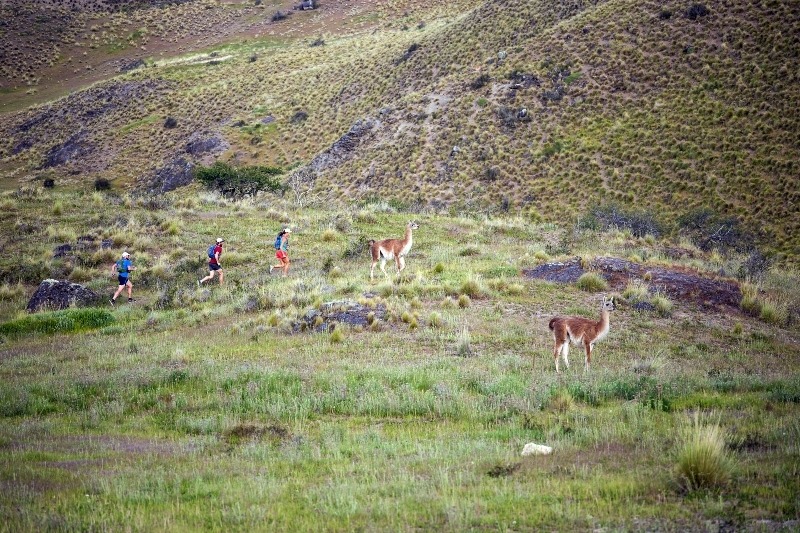 Running with the guanaco. Photo: James Q Martin
Running with the guanaco. Photo: James Q Martin
By 9 am the next morning we were moving again, up the gravel road through Valle Chacabuco amongst herds of passing guanaco, the male sentries squealing their warnings as we approached—young ones running and playing, nipping at each other. The second day had blue sky and sun, and as our tired legs loosened up we enjoyed views of many types of waterfowl throughout the valley’s restored wetlands. Seventeen miles of rolling gravel road running brought us through the familiar park headquarters at lunchtime. We took in some stew and bread at the Park’s restaurant before shouldering our packs and shuffling off to climb Cerro Tamanguito—nearly 4,000 feet above us.
We power-hiked up the steep flanks of Tamanguito on the Lagunas Altas Trail—a trail that overlooked our base camp at the West Wind Campground on which we had trained and explored multiple times over the past week. The calm day was hot on the northern facing sunny climb. We fought bees and biting flies and hoped for the signature Patagonian winds to return.
Climbing up, a large shadow suddenly covered us from above and we all looked up to find a group of five condors circling lazily above us, riding the slight wind currents. Could they sense our fatigue? Our slow pace made me think they might be scoping us. They’re huge silhouettes floating, rising, dropping—beautiful.
We made the bare, rocky summit of Tamanguito just after 2 pm to a bluebird clear day in Patagonia, a rare occurrence we were told by locals. We took in the stunning 360-degree view of every summit around—the Southern Patagonian Ice Field, the towering snow-covered peaks of San Lorenzo to the south, San Valentin to the northwest, and dozens of other snow-covered peaks in every direction. We stood for a while soaking it all in before dropping off the south side of Tamanguito to run the final 12 miles down to Cochrane through the Tamango Reserve.
We took our time enjoying the rugged beech forest of the reserve, hopping over all the blown down trees left over from the spring storms, dipping our bottles in the trickling snow melt streams, and batting away mosquitos in the marshy wet spots of the forest. As we finally made the last technical trail descent to gain the dirt road that led us into Cochrane, I couldn’t help thinking about a giant plate of food and a good bottle of Chilean wine. However, as we hit the paved city streets of Cochrane and ran into the town square to end our two-day, 106 mile adventure, in the middle of the town square the low afternoon sun was shining through the metal statue of the highly endangered huemul deer—and something deeper moved to the forefront of my tired thoughts.
What I pondered is Conservacion Patagonica’s project to connect three independent ecosystems into one large park. Their gigantic effort of taking out 500 miles of fencing, restoring overgrazed native grasslands, the ongoing effort to build a trail system that will eventually connect all the way through this beautiful place—a truly monumental task. A vision that takes patience and sustained effort, a vision that takes volunteers and people and good old honest hard work—much like running 106 miles—one foot in front of the other until eventually—with patience and perseverance—you reach the journey’s end.
GET INVOLVED
Donate to Conservacion Patagonica and help build 50 miles of trail. Patagonia will match your donation—mile for mile. The total estimated cost per mile is $1,600 and the matching program ends December 31, 2015.
Check out part 1 of this series from Luke Nelson: Arrival at the New Patagonia Park.
